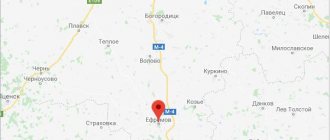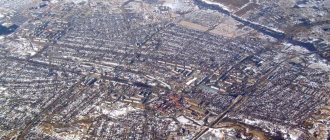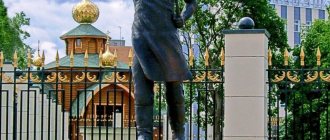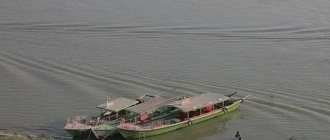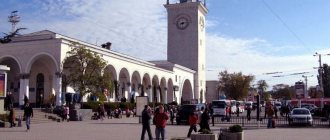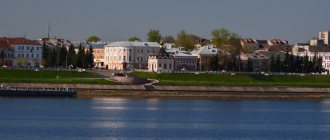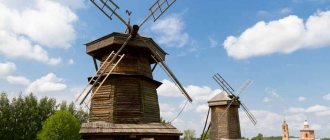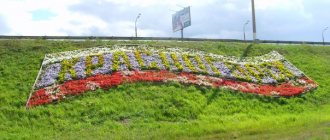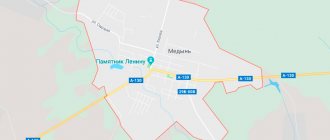Year founded: 1146
Tula Kremlin
Tula
- a Russian city, the capital of the Tula region, located at the confluence of the Tulitsa River with the Upa River.
For the first time about Tula
the city has been mentioned since the 14th century, although settlements existed in its place earlier. In the 15th century, Tula finally became part of the Russian state. In the 20s of the 16th century, the Tula stone Kremlin was built, which has survived to this day.
The border position of the city leads to the predominance of the military; the number of merchants and artisans among the townspeople is small. In 1595, according to the royal decree, 30 blacksmiths were moved to the city to develop the weapons business. This determines the future fate of the city as the main weapons workshop in Russia.
Kazan embankment (Photo: wikipedia.org) In the 17th century, the city ceased to be a border city, which served as an impetus for the development of industry. The first samovars in Tula began to be made at the beginning of the 19th century. In the War of 1812, the city's residents made a great contribution not only with weapons, but also with well-equipped militia. The Tula Kremlin and the city were never taken during any war.
Currently, Tula is the largest industrial and cultural center.
When in Tula you should definitely visit
Kremlin, Epiphany and Assumption Cathedrals. It is interesting to visit the weapons museum. It’s delicious to visit the gingerbread museum and complement your culinary tour with the samovar museum. Tula is famous for the house-museum of L.N. Tolstoy Yasnaya Polyana.
Museum of Weapons (Photo: wikipedia.org)
Interesting facts
It is interesting that Tula is not only the birthplace of the Russian samovar and the capital of gingerbread. Tula is also the birthplace of the Russian accordion; Tula accordions are famous throughout the world.
The origin of the name Tula has several versions. According to one of them, this is a “hidden, inaccessible place”; according to the second, it is translated from Old Turkic as “to take by force, to take away”.
The city is home to more than 475 thousand people (2020).
Hero City Day
Tula is celebrated in September.
General information and history of Tula
185 kilometers from Moscow, on the Central Russian Upland, is the birthplace of gingerbread, samovars and good weapons - the city of Tula. Tula is a year older than the capital of Russia - the first mention of this city dates back to 1146. After the Tatar-Mongol invasion, Tula became a center of trade and crafts; it belonged to the Ryazan princes. And after the famous Battle of Kulikovo, in the second half of the 15th century, Tula became part of the unified Russian state.
This is a city with a very interesting history, rich traditions and mysterious legends. This is the birthplace of many famous figures of art, science and history. Lev Nikolaevich Tolstoy and Sergei Yesenin, Mikhail Saltykov-Shchedrin, the famous Russian artist Vasily Dmitrievich Polenov, the illegitimate son of the Great Empress Catherine II, Count Bobrinsky, the famous Lefty and the founders of the famous Russian Demidov family lived here.
After World War II, Tula received the title of hero city. There were fierce battles on its territory, but the residents steadfastly withstood the defense, not allowing the Nazis to approach the capital. Throughout the world, Tula is famous for its delicious gingerbreads, samovars and weapons.
Climate and ecology of Tula
Tula is located in an area of temperate continental climate, summers here are quite warm (the average temperature in July is +20 degrees Celsius), winters are cool (the average temperature in January is -7 degrees Celsius). In recent years, there has been a significant increase in air temperature in summer - in June, July and August the air warms up to +30 - +35 degrees.
Near Tula there are quite a few large ones (the largest exporter of commercial cast iron in Russia), OJSC Kosogorsk Metallurgical Plant (quite a large producer of blast iron, artistic and industrial castings), OJSC Polema (one of the largest enterprises in the Russian Federation specializing in powder metallurgy), as well as OJSC Vanadium-Tula. The operation of these large factories, of course, negatively affects the ecology of the city, having a direct impact on the cleanliness of the air.
OJSC Tulachermet - cloud production factory
Some factories dump waste into rivers (in Upa, for example), causing serious pollution.
The groundwater
The reserves of underground sources for the region are impressive. The daily collection is more than 1100 thousand m³. The water is used by economic enterprises, the number of which exceeds 700. There are 3,300 wells in the region for the extraction of groundwater. Groundwater springs form where the Oka and Upa valleys are located.
A distinctive feature of the region is the presence of three underground seas. The liquid extracted from the springs is used for drinking, as well as for household purposes. Artesian waters enriched with mineral salts play an important role. The Krainka sanatorium resort in the Suvorovsky district operates on the basis of these sources.
We recommend reading: The largest river systems of Eurasia, rivers of internal flow, length table
Population of Tula
According to statistics at the beginning of 2014, 490,508 people now live in Tula, 56% of whom are women and 44% are men.
In recent years, the city's population has shown a very unfavorable trend: gradually the number of city residents is greatly declining. Thus, over the past 6 years, the number of city residents has decreased by 15,000 people. This may be due to the fact that many people decide to change their place of residence - applicants enter Moscow universities, older people try to move closer to nature, moving to regional towns and villages. However, one cannot ignore the increasing mortality rates and declining birth rates over the years.
Strength extreme competitions in Tula
Many families now try not to have more than one child. And this situation arises: people die, and fewer and fewer children begin to replace them. The reluctance of parents to increase the number of children in the family is often associated with an unfavorable situation in society and the inability to financially support the upbringing of children. Therefore, now the mortality rate is rising, and the birth rate is invariably declining.
Exhibition-fair Tula gingerbread
One of the main problems of the region is low life expectancy. So, on average, according to demographic studies, Tula residents live relatively short lives - most of them die at the age of 63. This is one of the lowest rates in all of Russia.
Most of the population of Tula today is of working age, their level of income is average.
There are a lot of schools, universities and vocational colleges in the city. Most of the population is educated. The difficulties are connected only with the acute shortage of places in kindergartens in the city - many parents are forced to wait in line for a kindergarten for their child immediately after his birth. Nowadays, many private kindergartens are appearing, however, not all families can afford to pay for the relatively expensive education of their child in kindergarten.
Migration
Tula is one of the economically developed cities of Russia, a large industrial and scientific center. People come to live from the former republics of the USSR and from some neighboring regions with lower incomes: Yaroslavl, Oryol, Kaluga regions.
The figures for migration between the constituent entities of the Russian Federation are as follows:
- 3226 arrived, 3440 Tula residents left for another area.
- In the first 3 months of 2022, 10,294 people arrived, 9,731 left, the increase was 563.
- Migration external to the region: 6391 arrivals and 5828 departures.
- Population growth due to migration with the CIS countries in 2020 amounted to 700 people, 77 people from other foreign countries.
- There were fewer relocations within the region by 799 people (17.0%).
- 88% of Tula residents leaving remain in the Central Federal District, mainly in Moscow and the Moscow region, 3.4% move to the Northwestern Federal District, 3.2% to the Southern Federal District, 2.3% to the Volga Federal District and 0.9% to the Ural Federal District.
Current data on population migration is posted on the Tulstat website.
Districts and real estate of Tula
Tula Map
Historically, there used to be many villages around Tula. Over time, 14 of them gradually became part of the city. Today they are microdistricts of Tula (Krasny Perekop, Kosaya Gora, Plekhanovo, Glushanki, Krivoluchye, etc.).
Today the city is administratively divided into 5 districts: Central, Proletarsky, Zarechensky, Privokzalny and Sovetsky district. It is especially worth noting that the Sovetsky and Privokzalny districts of Tula have a common territorial administration (administration). Each district has its own characteristics, advantages and disadvantages, and a unique history.
The central district is the heart of the city. This is where most of the shops, large industrial enterprises, architectural and historical monuments of Tula, and sports grounds are concentrated. It seems that life here does not subside for a minute, even at night.
Night center of Tula
This is the oldest district of Tula, therefore, in addition to high-rise modern high-rise buildings, there is also a fairly large sector of private households. Almost all the houses in this sector, unfortunately, are in rather disrepair. If you walk a little deeper into the streets near the Kremlin, you can see dugouts of an ancient building almost level with the asphalt, in which people still live.
Walking along the streets of the Central District, you can come across many buildings dating back to the 19th and 20th centuries and representing examples of wooden architecture of those times.
The cost of real estate in the Central District is one of the highest in the city. Thus, the cost of one square meter of real estate in new high-rise buildings is from 60,000 rubles, in the secondary sector - from 70,000 rubles.
The Central District of Tula also includes 26 villages that were previously located outside the city, but over time became part of Tula. Such villages, for example, include the village of Kosaya Gora or the village of Skuratovo. Housing in them is relatively inexpensive, however, these villages are located at a considerable distance from the center and are not distinguished by enviable tranquility.
The Proletarsky district is located in the northeast of the city, it is the largest district of Tula. Previously it was called Chulkovsky. The vast majority of residents of this area were previously employed in the arms and metallurgical industries, which today is reflected in the names of the streets: there are streets such as Garmonnaya and Lozhevaya, Patronnaya, Zamochnaya.
Most of the buildings in the Proletarsky district are residential multi-storey buildings. This is one of the most populated areas of the city. It is distinguished by its transport accessibility: to get to the city center, its residents only need to cross the Chulkovsky Bridge or the Eastern Bypass.
Tula. Proletarsky district
Among the residential buildings in the Proletarsky district, unfortunately, there are practically no areas for recreation and walking.
On the territory of the Proletarsky district, at a considerable distance from the center of Tula, there are also two more microdistricts - Krivoluchye and Glushanki. They are also residential areas with houses and shops. The cost of housing in the Proletarsky district ranges from 40,000 rubles per square meter.
The Sovetsky district of Tula today is administratively united with the Station district. Despite the fact that it is the youngest district of the city, about 90 thousand city residents live on its territory today. Its high popularity is due to its proximity to the city center and all important buildings. On its territory there is a central park of culture and recreation named after. Belousov, the station district belongs to Platonovsky Park.
Tula. Belousov Park
In the area there are not only many old and new buildings, but also a significant number of places for walking with children and relaxing. There are relatively many playgrounds and green spaces here. Therefore, most Tula residents strive to acquire housing in the Sovetsky or Privokzalny districts of the city. On the territory of the Sovetsky district there are also the central transport arteries of the city - Moskovsky Station and Bus Station. The cost of housing here ranges from 50 – 60 thousand rubles per square meter.
Tula. Railway station
Zarechensky district is often called simply “Zarechye”. This area is located in the northwestern part of the city. This is one of the oldest parts of Tula, it was built in 1595.
Tula. Zarechye
Initially, by royal decree, this area was organized in order to place blacksmiths on its territory, who were supposed to produce weapons. This interesting fact of history is reflected in the names of the streets: Stvolnaya, Dulnaya, Arsenalnaya, Porokhovaya, Kurkovaya and others.
Zarechye is a region of contrasts. Today, on its territory there are both modern buildings (for example, the new Museum of Weapons) and very old houses in which people still live. The remote corners of Zarechye are quite dangerous; you should be careful when entering them at night.
It is especially difficult to get from Zarechye to the city center in the morning - people have to endure kilometer-long traffic jams and waste time. The same situation applies to traffic in the evening from the center back to Zarechye. However, housing here is relatively affordable - its cost is from 40,000 rubles per square meter.
Ponds
To increase the volume of reservoirs, 650 ponds were built in the region over a certain period of time, the surface area of which occupies 3.6 thousand hectares. The largest reservoirs appeared in the Tula region back in the 17th and 18th centuries. They were created near metallurgical enterprises. There were also ponds on estates, for economic purposes in monasteries and villages.
Fish were bred in the ponds, but this changed after the revolution. In the territory of the present Tula region, reservoirs were drained, but not restored. 60% of the region's pond system was destroyed. In the early 60s, the situation changed and the restoration of reservoirs began. Today they are located mostly from north to south. Large objects are located in:
- State farm "Molodenki" Kimovsky district.
- State farm "Progress" Venevsky district.
- State farm "Nepreika" Leninsky district.
- Collective farm named after Suvorov, Suvorov district.
City infrastructure
Almost every year or six months, residents of Tula have to involuntarily be surprised: prices for housing and communal services tariffs increase with a certain frequency, while the salaries of workers in the vast majority of sectors remain at the same level. Of course, residents have very real questions: “What should I do? And what should I do? Of course, there is no clear answer to them, so the residents of the city have to just put up with the current situation for now.
While middle-income residents with full-time employment can pay their bills, retirees often struggle. A particularly incomprehensible situation arises when residents of dilapidated buildings receive crazy bills for housing and communal services.
Meanwhile, the condition of roads in the Tula region also leaves much to be desired. Last year there was a very interesting trend when services began laying asphalt in late autumn. As a result, with the onset of heat after the snow melted, the roads again began to require major repairs.
With the coming to power of the new governor, the situation has changed a little. Lenin Avenue (the central street of the city) and other important streets of Tula were repaired. At the beginning of June 2012, the top surface of many streets was removed (thus raising the hope in the hearts of city residents that repairs would be carried out), but even several months later they were not carried out. Now the asphalt on these streets is broken again and requires major repairs.
Separately, it is worth noting the fact that every year Tula is becoming increasingly stuck in traffic jams. During weekday rush hours, traffic in the city center is extremely difficult, and in the morning it is almost impossible to get from Zarechye to the Center (in the evening, on the contrary, from the Center to Zarechye). The government is building new highways (in particular, in the near future it is planned to begin the construction of an overpass that will connect the Sovetsky and Zarechensky districts of the city), which in the future should somewhat ease the tension of traffic in the city center. In the meantime, the situation is quite complicated.
Despite the fact that there is quite a lot of public transport around the city, residents of Tula are often forced to experience discomfort associated with a lack of means of transportation. It’s a paradox: sometimes at some peak times it’s simply impossible to squeeze into buses, trolleybuses and autolines. It is always especially difficult to leave in the morning, afternoon (during lunch break) and in the evening, when everyone starts moving from work. There are quite a lot of autolines on each route, but here’s the paradox: when they are needed, they often simply don’t exist.
Sometimes trams save city residents. Indeed, the trams do not get stuck in traffic jams, they move smoothly and smoothly, it is always spacious and there is no big crowd. However, they go quite rarely: in fact, about once every 20-25 minutes, and they drive very slowly. This type of transport is more suitable for those who are not in a particular hurry. Actually, for this reason, trams are most often preferred by pensioners.
There are quite a few different schools in almost every district of the city, so Tula residents always have a choice of which educational institution to send their child to. There are specialized schools, lyceums, and gymnasiums.
But, unfortunately, there are absolutely not enough kindergartens. Parents have to wait in line at kindergartens immediately at the birth of their child, and even then, quite often there are cases when they never wait their turn. Now many different private kindergartens are opening, but not all parents can afford to pay for their precious child’s stay in such a kindergarten.
Lakes
Reservoirs of this type are not common in the region. Today, floodplain and karst lakes have been preserved. In the past, they reached a length of 200–250 meters and a depth of 3–4 m. The modern lake network is poorly developed. The average depth of reservoirs does not exceed 1–3 m. Karst lakes are up to 20 meters deep and up to 80 wide. Distributed in the following areas:
- Shchekinsky.
- Leninist.
- Kimovsky.
- Suvorovsky and others.
Scientists know the history of Lake Volovo, which was located in part of the Kulikovo Field. The geographical object occupied the area from the upper reaches of the Don to the Oka. The reservoir was located in a strategic location, but today it has lost its prominence and the banks are overgrown.
The largest objects in the region are Ivan-Ozero, Shilovskoye, Zhupen. At the end of March, when the ice begins to melt, a lower level of reservoirs is noted.
We recommend reading: Oka (Sayan) River on the map of the Irkutsk region, rafting and fishing
Enterprises and work in Tula
Since ancient times, Tula has been known as a city of gunsmiths. Of course, this fact left a significant imprint on the appearance of the city and the citizens living in it. Today Tula is known throughout the world as a major center of weapons crafts and the metalworking industry.
A special place in the structure of the city's industry is occupied by such industries as metallurgy and mechanical engineering, metalworking. The food industry is quite well developed. Enterprises belonging to the Russian defense complex also operate within the city (for example, Tula KBP, Strela Research Institute).
View of the Tula Arms Factory and the Kremlin
One of the largest enterprises in the machine-building complex is the Tula Mashzavod, which today produces various weapons for the defense of Russia. Widely known in Russia and specializing in the production of various types of cast iron, synthicom and granular filler, crushed stone.
Small business is also quite well developed in the city (today, about six thousand commercial enterprises are registered in Tula). About two hundred thousand city residents are involved in small businesses. Most of these enterprises are engaged not only in the production and sale of goods and services, they also conduct various developments and carry out interesting research work (today, 16 fairly large Tula enterprises specialize in development). Almost everywhere in the city, active construction of retail and office buildings is underway, where shops and branches of various companies are opening.
Tula enterprises also actively cooperate with their foreign colleagues from 70 countries, supplying goods for export and import. Thus, the majority of exports are made up of ferrous metallurgy products, and imports are made up of consumer goods and products produced by enterprises of the machine-building complex.
The tourism business is very well developed in Tula. So, today there are about 140 travel companies, 14 hotels, many restaurants and interesting cafes operating within the city.
Gostiny Dvor shopping center
The largest shopping centers in the city are Paradise, Gostiny Dvor, and Rio. In Tula there are also hypermarkets “Metro”, “Line”, “Spar”, and many different construction and furniture centers.
Tula. Intercity
The central market (Kaminsky Street) and the shopping centers located on its territory are especially popular. There are also quite a few food markets in Tula.
Water resources of the Tula region
Most of the water resources of the Tula region are concentrated above ground. Underground, in this part of Russia, there are a small number of pools. Replenishment of resources is carried out as follows: 16.3 km³ of precipitation is formed, after evaporation 12 km³ of liquid is lost. Another 14 km³ seeps through the ground.
In total, the list of surface reservoirs within the Tula region includes lakes, 652 artificial ponds and over 1.6 thousand large and small rivers.
Crime
It is difficult to give any specific assessment of the criminal situation in the city. On the one hand, compared to other Russian cities, Tula is not one of the most dangerous. On the other hand, sometimes crazy crimes happen here that force city residents to hold their heads and try to leave the house as little as possible at night.
For example, such crimes include the recent April case when a resident of Bogoroditsk, Gegham Sargsyan, defending his family from armed criminals, killed three people. In the middle of the day, four unknown men broke into the man's house and began to threaten his family members (wife, daughter, daughter-in-law and small children) with a knife, a baseball bat and a pistol, beating them and demanding money. The owner of the house fatally wounded three of the attackers with a kitchen knife, while the fourth offender managed to escape. This case received quite wide publicity in society, as some government officials began to say that Gegham Sargsyan faces imprisonment for murder.
Another crime that received quite wide publicity occurred on the night of July 24-25, 2011. It was at this time that 19-year-old Ivan Ivanchenko, during a quarrel over personal hostility, killed his friend Maria Shkarupa with a strong blow to the head. In order to hide the traces of the crime and not leave alive unnecessary witnesses, the young man also killed the victim’s mother and her three small children – boys four, six and eight years old. Thus, 5 people became victims of the criminal. Now Ivanchenko is in custody, doctors recently established his mental insanity.
At the beginning of June 2012, another terrible crime occurred in the regional city of Kimovsk. Late at night, a three-year-old girl was found horribly beaten and raped at the entrance to a city park. Such injuries were inflicted on the baby by an acquaintance of her mother, who inflicted terrible beatings on the girl, raped her, pierced her head, began to strangle her, and then decided to kill her. The child miraculously survived that terrible night. It turned out that the girl’s mother herself gave her baby into the hands of the criminal, deciding to be away from her lover for a while. It was at this time that the man committed a crime that cannot be comprehended by any sane person.
It should be especially noted that in Tula sometimes there are violent family disputes (although, probably, they occur in every city), as well as various car accidents, as a result of which people die.
Meanwhile, every person must understand that his safety is only in his hands. Therefore, please avoid walking alone at night. Especially in such areas of the city as Zarechye, Perekop, Krivoluchye, Proletarsky district.
